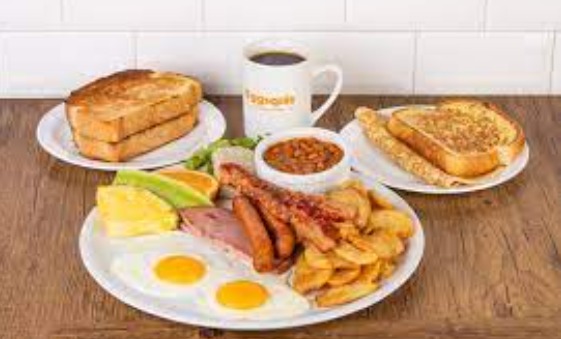MAXIMIZING THE SPACE WITH MULTIFUNCTIONAL RESTAURANT FURNITURE
Restaurant space optimization is a constant problem that requires imagination, planning, and knowledge of multipurpose furniture options. Making the most of every square foot is more important than ever as commercial premises are more expensive and metropolitan areas get more congested. This essay explores how multipurpose furniture may improve customer experience, boost operational efficiency, and ultimately transform restaurant design.
IMPORTANCE OF MULTIFUNCTIONAL FURNITURE
Optimizing space is a crucial aspect of the restaurant business. A restaurant’s efficient use of space greatly impacts the number of customers it can serve, which affects sales and profitability. A well-planned area guarantees efficient service, shortens wait times, and improves the whole eating experience. Because multifunctional furniture is flexible and adaptable, it is essential to reach these objectives.
TYPES OF MULTIFUNCTIONAL FURNITURE
Adjustable Tables and Chairs
Convertible restaurant furniture is revolutionary. Tables that can be fully folded up or have their height altered offer unmatched flexibility. A dining table that doubles as a cocktail table, for instance, easily changes the setting from dinner service to an area suitable for evening cocktails. Similarly, seats with concealed storage may be used for both seating and holding extra cutlery or menus.
Chairs that Nest and Stack
Stackable and nestable chairs are essential for optimizing available space. Stackable chairs are a great method for clearing up floor space when not in use or when cleaning is necessary. Small dining spaces benefit greatly from nesting chairs, which slide beneath tables when not in use. Thanks to these ideas, restaurants may easily modify their layout to suit different group sizes and service requirements.
Sectional Furnishings
Modular furniture systems provide great versatility since they may be rearranged in many ways. These pieces are adaptable to many eating situations, ranging from cozy two-person get-togethers to spacious group settings. For example, modular booths may be divided into individual seats or joined to make long banquettes. Thanks to this flexibility, restaurants can accommodate a wide range of client preferences while maximizing their seating capacity.
Furniture with Built-In Storage
In a restaurant atmosphere, furniture with integrated storage solutions is crucial. The eating room may be clutter-free, with cupboards built into bar counters, tables with drawers, and seats with under-seat storage. These designs guarantee that necessary things are constantly accessible, conserving space and improving operating efficiency.
DESIGN CONSIDERATION FOR RESTAURANT FURNITURE
There are a few design factors to consider while choosing multipurpose furniture:
Sturdiness and Upkeep
Furniture at restaurants needs to be durable and easily cleaned. Materials must be easy to maintain and long-lasting. For example, because of their durability and strength, metal and oak make excellent materials for tables and chairs. To keep the furniture looking good and working well over time, the upholstery has to be stain-resistant and simple to clean.
Both comfort and beauty
While comfort and aesthetics are important, functionality should always come first. Ergonomically designed chairs and tables improve the eating experience and entice customers to stay and enjoy their meals. The furniture should also complement the restaurant’s general design motif to create a unified and welcoming ambiance.
Adaptability and Usability
Flexibility is the main benefit of multipurpose furniture, but usability shouldn’t suffer in favor of this flexibility. Staff members should be able to swiftly rearrange the furniture to suit their needs. Lightweight designs and simple systems may greatly decrease setup and disassembly time and effort.
CONCLUSION
Using multipurpose restaurant furniture to use available space is a smart move with several advantages. These adaptable pieces are a priceless addition to any restaurant, as they may enhance the overall appearance and improve the customer experience and operational efficiency. Adopting cutting-edge furniture solutions will be crucial to maintaining competitiveness and satisfying today’s diners’ wide range of demands as the business changes. Restaurant owners may create dynamic, flexible environments that work well in any setting by carefully choosing, arranging, and keeping multipurpose furniture.
MAXIMIZING THE SPACE WITH MULTIFUNCTIONAL RESTAURANT FURNITURE
Restaurant space optimization is a constant problem that requires imagination, planning, and knowledge of multipurpose furniture options. Making the most of every square foot is more important than ever as commercial premises become more expensive and metropolitan areas become more congested. This essay explores several ways that multipurpose furniture may improve customer experience, boost operational efficiency, and completely transform restaurant design.
IMPORTANCE OF MULTIFUNCTIONAL FURNITURE
Optimizing space is a crucial aspect of the restaurant business. A restaurant’s efficient use of space greatly impacts the number of customers it can serve, which affects sales and profitability. A well-planned area guarantees efficient service, shortens wait times, and improves the whole eating experience. Because multifunctional furniture is flexible and adaptable, it is essential to reach these objectives.
TYPES OF MULTIFUNCTIONAL FURNITURE
Adjustable Tables and Chairs
Restaurant furniture that is convertible is revolutionary. Tables that can be fully folded up or have their height altered offer unmatched flexibility. A dining table that doubles as a cocktail table, for instance, easily changes the setting from dinner service to an area suitable for evening cocktails. Similar to this, seats with concealed storage may be used for both seating and holding extra cutlery or menus.
Chairs that Nest and Stack
Stackable and nestable chairs are essential for optimizing available space. Stackable chairs are a great method for clearing up floor space when not in use or when cleaning is necessary. Small dining spaces benefit greatly from nesting chairs, which slide beneath tables when not in use. Thanks to these ideas, restaurants may easily modify their layout to suit different group sizes and service requirements.
Sectional Furnishings
Modular furniture systems provide great versatility since they may be rearranged in many ways. These pieces are adaptable to many eating situations, ranging from cozy two-person get-togethers to spacious group settings. For example, modular booths may be divided into individual seats or joined to make long banquettes. Thanks to this flexibility, restaurants can accommodate a wide range of client preferences while maximizing their seating capacity.
Furniture with Built-In Storage
In a restaurant atmosphere, furniture with integrated storage solutions is crucial. The eating room may be clutter-free, with cupboards built into bar counters, tables with drawers, and seats with under-seat storage. These designs guarantee that necessary things are constantly accessible, conserving space and improving operating efficiency.
DESIGN CONSIDERATION FOR RESTAURANT FURNITURE
There are a few design factors to consider while choosing multipurpose furniture:
Sturdiness and Upkeep
Furniture at restaurants needs to be durable and easily cleaned. Materials must also be easy to maintain and long-lasting. For example, metal and oak make excellent materials for tables and chairs because of their durability and strength. To keep the furniture looking good and working well over time, the upholstery has to be stain-resistant and straightforward to clean.
Both comfort and beauty
While comfort and aesthetics are important, functionality should always come first. Ergonomically designed chairs and tables improve the eating experience and entice customers to stay and enjoy their meals. The furniture should also complement the restaurant’s general design motif to create a unified and welcoming ambiance.
Adaptability and Usability
Flexibility is the main benefit of multipurpose furniture, but usability shouldn’t suffer in favor of this flexibility. Staff members should be able to swiftly rearrange the furniture to suit their needs. Lightweight designs and simple systems may greatly decrease setup and disassembly time and effort.
CONCLUSION
Using multipurpose restaurant furniture to use available space is a smart move with several advantages. These adaptable pieces are a priceless addition to any restaurant, as they may enhance the overall appearance and improve the customer experience and operational efficiency. Adopting cutting-edge furniture solutions will be crucial to maintaining competitiveness and satisfying today’s diners’ wide range of demands as the business changes. Restaurant owners may create dynamic, flexible environments that work well in any setting by carefully choosing, arranging, and keeping multipurpose furniture.







